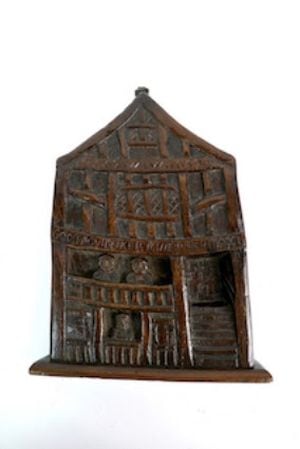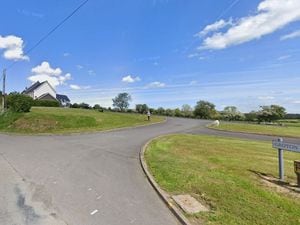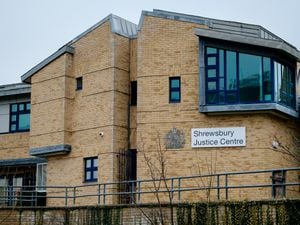Seventeenth century panel sells for five times its estimate at Shrewsbury auction
A 17th century carved oak panel portraying the facade of God's Providence House in Chester, which was left untouched by the Plague which decimated the town sold for five times its estimate when it went under the hammer in Shrewsbury this week.

The 400-year-old commemorative oak panel shows the family home in Chester that was leapfrogged by the Plague in 1647, when everyone in every other house in the street was killed.
It sold for £5,700, far more than the £800-£1,200 estimate.
Jeremy Lamond, director of Halls Fine Art in Shrewsbury said: “I was aware of the story and of the house of which this carving is an illustration, but I could not be sure if there was a direct link until I saw the date 1652 carved into the panel. That is the precise date when the house was rebuilt.
"Then I was sure that this dedication panel and its thanks to divine providence was the real thing, an object that once decorated the ‘Gods Providence House’ at 9 Watergate Street, Chester."
After the sale he said that there had been huge interest in the plague with many phone lines booked so he was not surprised that it had exceeded its estimate so greatly.
“The vendor was in the room and was delighted with the price achieved," he added.
For the last century the panel has been in the same local family.
It was owned by Robert Beswick (1884-1973) who was the grandfather of the present owner, Juliet Blackie. Robert Beswick was a Staffordshire solicitor and entrepreneur and a connoisseur and collector of historic artefacts.
He began collecting in his teens and probably owned the panel by the Edwardian period. He was an active member of archaeological and antiquarian societies. For most of his life, Robert lived in Newcastle-under-Lyme and later Stone in Staffordshire. He was related to the Beswick family of potters although was not a potter himself.
The name ‘Gods Providence House’ is reputed to have been given due to the legend surrounding the building that stood prior to the construction of the present house on the site. The original property, which is believed to date from the 13th century, is reported to have been the only one in a considerable area whose inhabitants escaped the plague that swept through Chester in 1647-48, which killed some 2,000 in the city. The population at the time is estimated to have been only around 5,000.
The original building was destroyed and the current house built in 1652. Reconstructed in 1862 the building, like many in Chester, is not as old as it first appears, and not a renovation of an ancient Tudor house, but in fact a completely new building.





